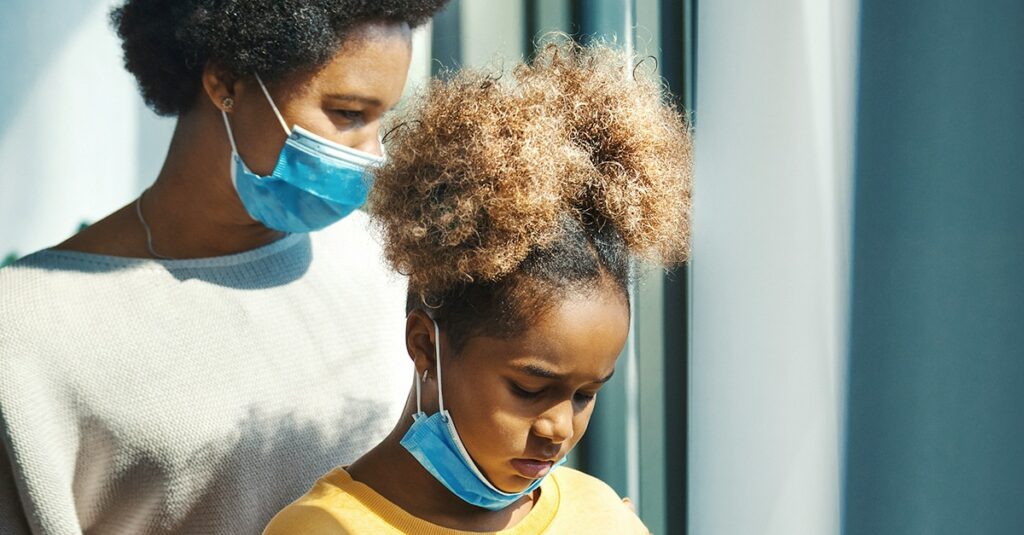At the time of publishing, the CDC reports 6 million positive cases of COVID-19 in the United States, with over 176,000 deaths due to coronavirus-related complications. In addition to the virus itself, the COVID-19 health crisis has brought the world to a standstill, creating socioeconomic shutdowns and driving billions of people into quarantine and isolation. Indeed, COVID-19 is affecting all of us in some way, shape, or form. However, research concerning people of color (POC) reveals the troubling reality of how COVID-19, and health issues at large, affect some populations more than others.
While not all COVID-19 records provide race/ethnicity information, those that do show that non-Hispanic white (40.6%), Hispanic/Latinx (30.7%), and non-Hispanic African American populations (19.3%) make up the three most-affected races/ethnicities as of August 2020. However, when considering these percentages in proportion to their respective populations, the statistics read much more grim: Hispanic/Latinx and non-Hispanic American Indian/Alaska Native populations are 2.8-times more likely to test positive for COVID-19 than non-Hispanic white populations, and, in addition to being 2.6-times more likely to get COVID-19, non-Hispanic African American populations possess a 2.1-times greater likelihood of coronavirus-related death.
When explaining the disproportionate effects of COVID-19, some experts point to POC making up 43% of essential workers in the United States, putting them at a greater risk of exposure to COVID-19. In addition, the coronavirus poses a higher risk to people with certain pre-existing medical conditions; among the conditions listed by the CDC is “severe heart conditions,” something that continues to present a disparity for African American residents. The current dialogue surrounding systemic racism in the United States can also provide insight when analyzing COVID-19 health disparities. For example, racial disparities in education may prevent students of color from learning the skills and earning the eventual degrees necessary for jobs with less human contact. Further, disparities in housing may—when considering housing as a social determinant of health—contribute to POC contracting health conditions due to multi-generational households and substandard housing that may, in turn, elevate their exposure risk.
Unfortunately, healthcare is not exempt from racial and ethnic disparities, and these disparities aren’t limited to the COVID-19 health crisis. Our own National Community Health Survey found African Americans facing heightened difficulty or delay when receiving healthcare; and both African American and Hispanic/Latinx populations having a higher likelihood in citing instances where one had to forgo medication due to cost. Similarly, the AHRQ’s latest National Qualities and Disparities Report highlighted that, while some disparities have improved since 2000, racial and ethnic disparities persist in quality of care, with African American, American Indian and Alaskan Native, and Native Hawaiian and Pacific Islander populations receiving worse care than white populations in 40% of quality measures, and Hispanic/Latinx and Asian populations preceding white populations in 35% and 27% of quality measures, respectively (however, Asian populations also received care that outperformed white populations in 28% of quality measures). Other studies explore implicit bias among providers and practitioners, inspiring some organizations to include monitoring of biases in their efforts to combat racial disparities.
Nonetheless, when discussing health disparities among African American populations, Dr. Anthony Fauci, National Institute of Allergy and Infectious Diseases director and prominent member of the White House Coronavirus Task Force, declared, “We will get over coronavirus, but there will still be health disparities, which we really do need to address in the African American community.” That sentiment can be echoed when addressing racial disparities across all POC in the United States, and it poses the question for all Americans, “What can I do to fight against racial disparities in my community?”
At PRC, we partner with hospitals and health systems across the country to drive healthcare excellence. Our Community Health Needs Assessment can help, analyzing social determinants of health and gathering input from key informants to give hospitals a complete understanding of the unique conditions and challenges that these underserved populations face. During the COVID-19 health crisis, PRC also offers the Coronavirus Community Impact Survey which evaluates how COVID-19 has impacted your community. The data and insights from these research solutions can lay the groundwork for implementation strategies or a community health improvement plan that yields meaningful change, and together, we can work towards a future where these disparities are no more.
Contact us at [email protected] to learn more about our community health research, raise awareness by sharing articles like this on social media, and further educate yourself by checking out the sources and additional resources below.
Sources and Further Reading:
Conversations on COVID-19: Impacts on Communities of Color
‘Heroes or hostages?’: Communities of color bear the burden of essential work in coronavirus crisis
Implicit Bias and Racial Disparities in Health Care
Racial health disparities already existed in America— the coronavirus just exacerbated them
The Disproportionate Impact of COVID-19 on Racial and Ethnic Minorities in the United States
Learn how PRC can help you champion DEI in your workplace with our DEI Pulse Studies!

